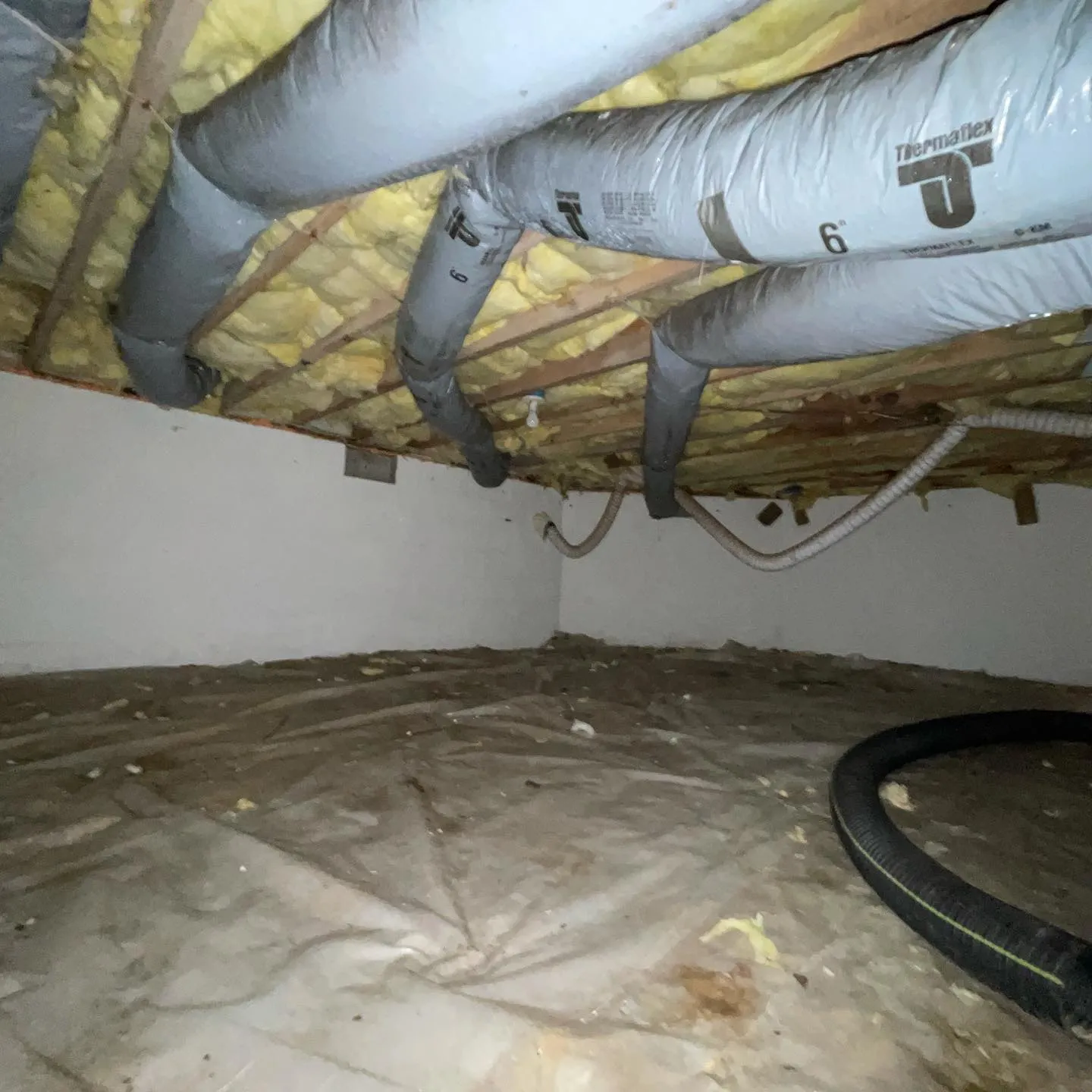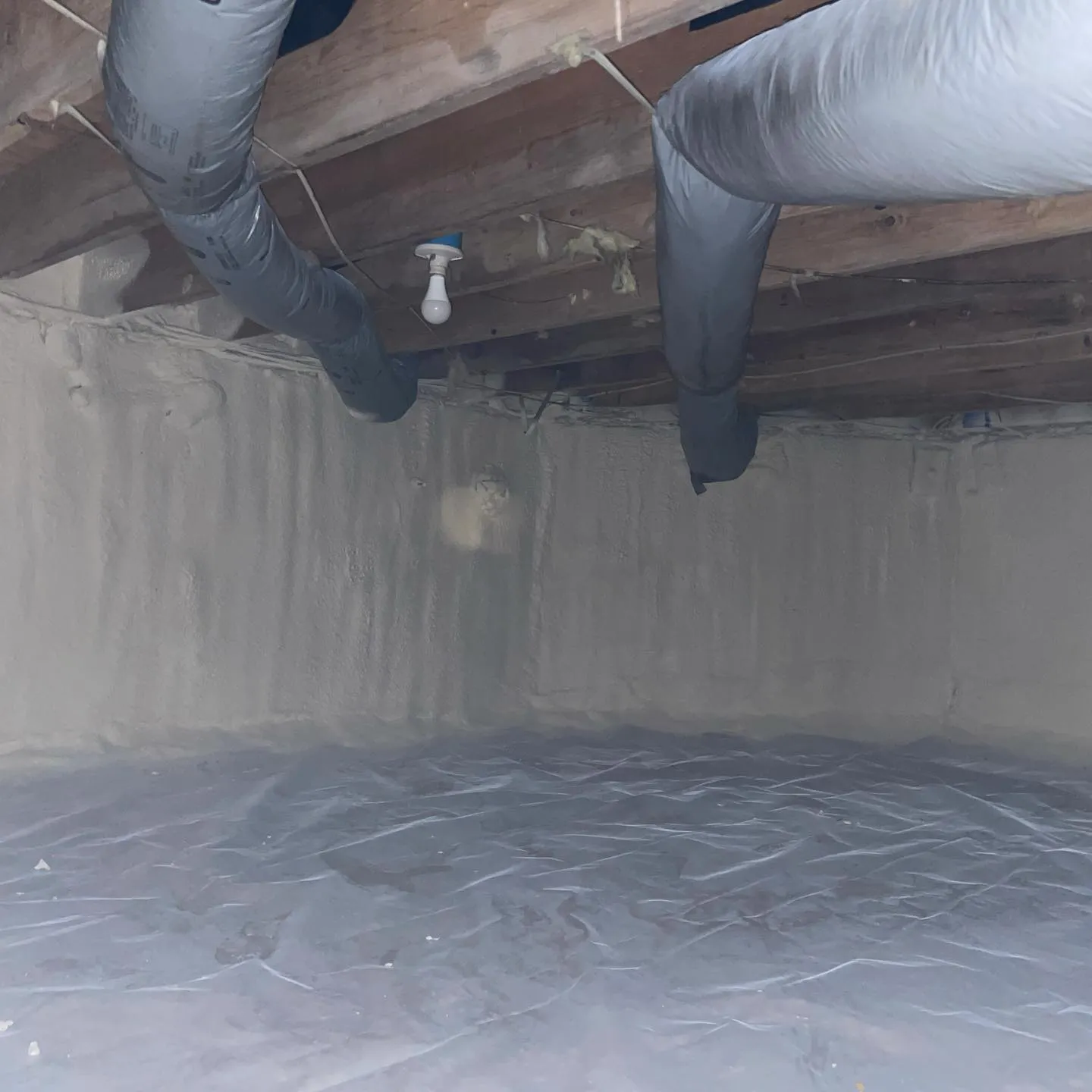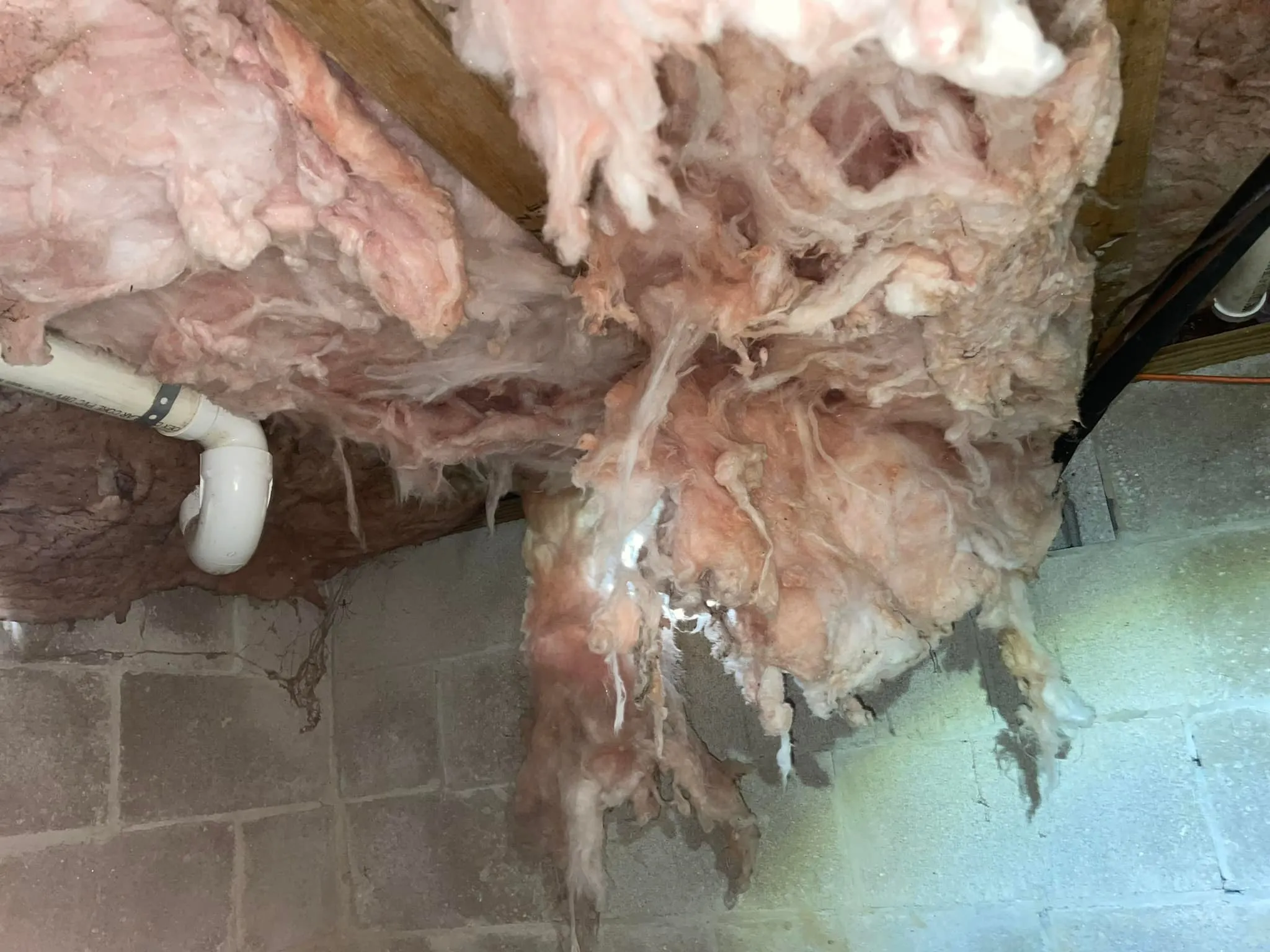
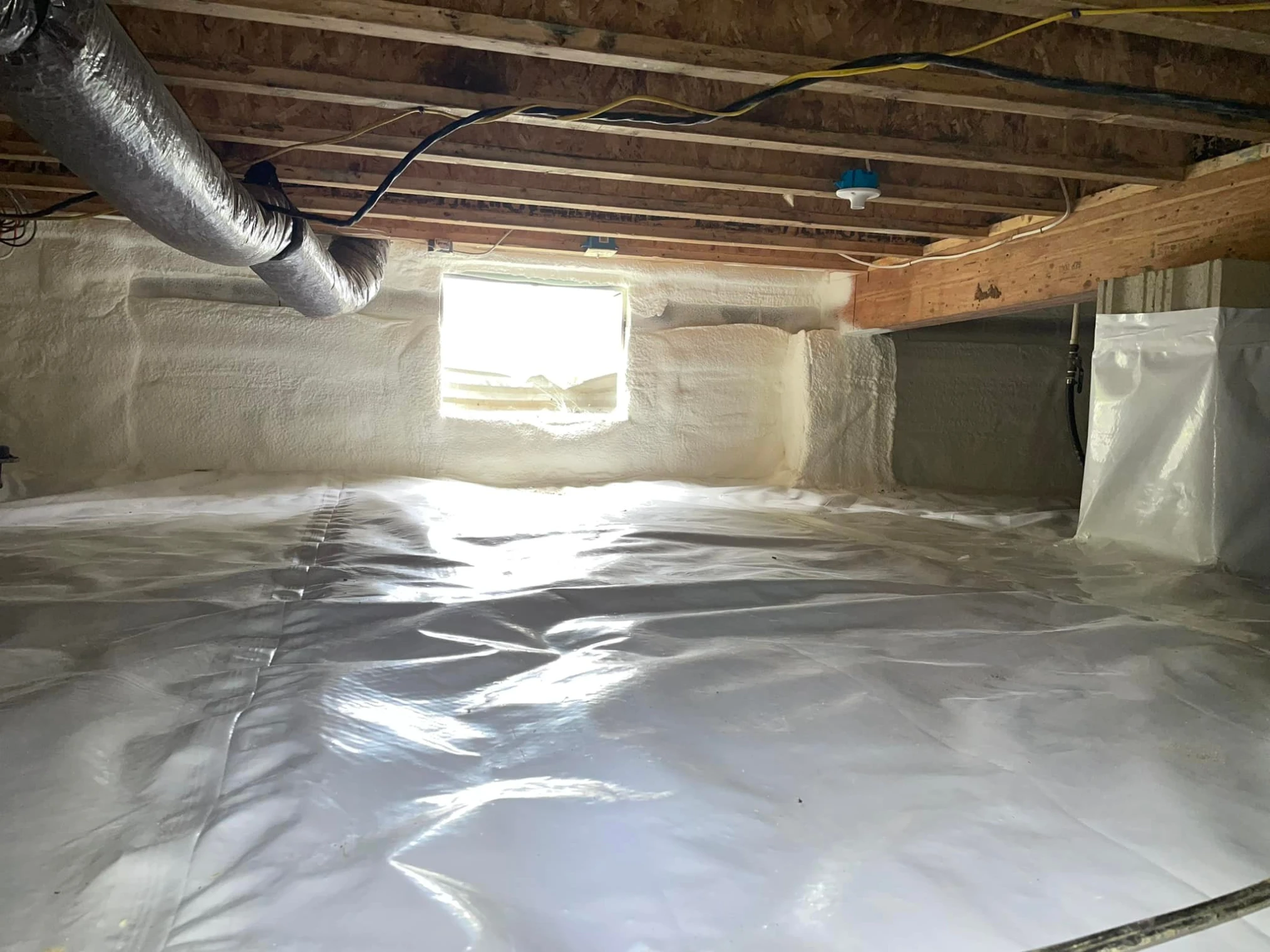
Crawlspace encapsulation transforms your home’s foundation area into a controlled environment that prevents moisture intrusion, improves indoor air quality, and reduces energy consumption by 15-20% annually. This comprehensive moisture control system involves sealing the crawlspace walls and floor with vapor barriers, installing proper drainage, and implementing climate control measures that address the root causes of foundation-related problems.
The primary advantages include eliminating musty odors, preventing mold growth, reducing pest infiltration, and creating substantial energy savings through improved thermal efficiency. Professional installation ensures proper implementation of moisture barriers, ventilation systems, and insulation integration that delivers measurable improvements in home comfort and structural integrity.
Unencapsulated crawlspaces create perfect conditions for moisture accumulation, leading to structural damage and health concerns. Ground moisture evaporates continuously, creating humidity levels that exceed 60% – the threshold where mold and bacteria thrive. This moisture travels upward through the stack effect, contaminating living spaces with pollutants and allergens.
Foundation walls made of concrete, block, or stone naturally allow moisture transmission through capillary action and vapor diffusion. Without proper barriers, this moisture creates condensation on cooler surfaces, leading to wood rot, insulation degradation, and pest attraction.
Bonus Tip: Check for early moisture signs including efflorescence (white chalky deposits) on foundation walls, which indicates active moisture movement through masonry materials.
Complete encapsulation eliminates ground moisture evaporation by installing heavy-duty vapor barriers across all surfaces. The system includes perimeter drainage, sump pump integration where necessary, and proper sealing of all penetrations through foundation walls.
This comprehensive approach prevents wood rot in floor joists and subflooring, eliminates conditions that attract termites and other pests, and maintains structural integrity over decades rather than years.
Encapsulated crawlspaces reduce heating and cooling loads by creating a conditioned buffer zone beneath living spaces. Research from the Building Science Corporation indicates properly encapsulated crawlspaces reduce annual energy consumption by 15-20% compared to ventilated systems.
The controlled environment eliminates air leakage through floor assemblies and reduces the workload on HVAC systems. Ductwork located in encapsulated spaces operates more efficiently since temperature differentials decrease significantly.
| Encapsulation Method | Energy Savings | Humidity Reduction | Cost Effectiveness |
|---|---|---|---|
| Full Vapor Barrier System | 15-20% annually | 40-60% reduction | High long-term value |
| Partial Wall Sealing | 8-12% annually | 20-30% reduction | Moderate short-term |
| Ventilation Only | 3-5% annually | 10-15% reduction | Low effectiveness |
Stack effect naturally draws air from crawlspaces into living areas, making foundation air quality directly impact occupant health. Encapsulation eliminates moisture-related mold growth, reduces radon infiltration, and prevents pest-related allergens from entering the home environment.
Sealed crawlspaces maintain relative humidity levels between 30-50%, the optimal range for human comfort and respiratory health. This controlled environment prevents dust mite proliferation and reduces airborne particulates that aggravate asthma and allergies.
| Component | Material Type | Thickness | Performance Rating |
|---|---|---|---|
| Floor Vapor Barrier | Reinforced Polyethylene | 6-20 mil | Class A vapor retarder |
| Wall Barrier | Reinforced Polyethylene | 6-15 mil | Flame spread rating <25 |
| Seam Sealing | Polyurethane Tape | 4-inch width | 15+ year durability |
| Insulation Integration | Closed Cell Foam | R-13 to R-19 | Moisture resistant |
Bonus Tip: Specify barriers with reinforcement mesh for durability in high-traffic maintenance areas, preventing punctures during routine inspections.
Mid-Atlantic climates present unique challenges with seasonal temperature fluctuations and high humidity levels during summer months. According to the National Weather Service, Maryland experiences average relative humidity above 70% from May through September, creating persistent moisture pressure against foundation systems.
Encapsulation systems in this region require enhanced dehumidification capacity and robust drainage solutions to handle periodic flooding events and prolonged wet seasons.
Evaluate your foundation’s current condition before proceeding with encapsulation. Address existing water intrusion issues, foundation cracks, or grading problems that direct surface water toward the structure. These underlying issues must be resolved to ensure encapsulation effectiveness.
Assess your home’s HVAC integration requirements since encapsulated spaces often benefit from connection to the main system or dedicated dehumidification equipment. Consider accessibility needs for future maintenance and utility access when planning barrier placement and sealing strategies.
Determine whether your electrical, plumbing, or HVAC systems require modifications before installation. Some encapsulation methods affect code compliance for electrical installations or require upgraded ventilation for combustion appliances.
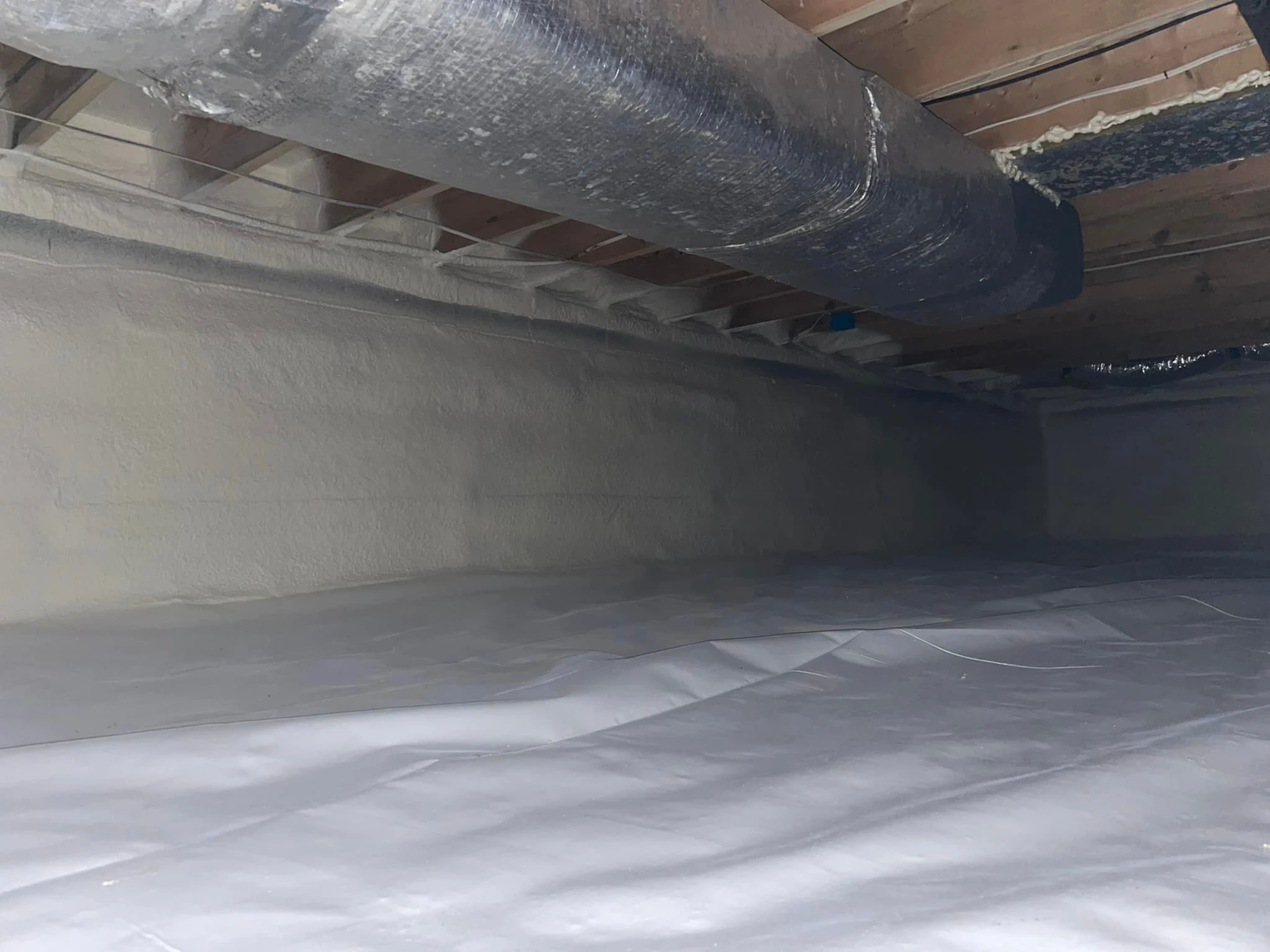
Peninsula Insulation, LLC delivers comprehensive moisture control solutions designed for Mid-Atlantic climate conditions:
Encapsulation becomes the preferred solution when existing ventilation fails to control moisture levels below 60% relative humidity. This typically occurs in homes with clay soils, high water tables, or inadequate natural air circulation. Modern building science research consistently demonstrates superior performance of conditioned crawlspaces over ventilated systems in humid climates.
Properly installed systems require minimal maintenance beyond annual inspections of vapor barriers, drainage components, and dehumidification equipment. Check for punctures or tears in barrier materials, ensure drainage systems remain clear, and monitor humidity levels with installed gauges..
Encapsulation often improves HVAC efficiency by reducing temperature differentials and eliminating moisture-related ductwork problems. Some installations benefit from connecting the crawlspace to the home’s HVAC system for optimal climate control, while others require dedicated dehumidification equipment based on space size and moisture load.
Crawlspace encapsulation delivers measurable benefits through moisture control, energy efficiency, and indoor air quality improvements that compound over time. Success depends on proper system design that addresses site-specific drainage needs, appropriate material selection for local climate conditions, and professional installation that ensures long-term performance.
Evaluate your foundation’s current condition and address underlying water intrusion issues before implementation. Consider HVAC integration requirements and maintenance accessibility when planning your encapsulation approach for optimal results.
Effective crawlspace encapsulation requires thorough site evaluation and specialized installation techniques that ensure lasting performance. Peninsula Insulation, LLC provides comprehensive assessments that identify moisture sources, drainage requirements, and optimal system specifications for your specific foundation conditions.
Contact Peninsula Insulation, LLC at wil@mdsprayfoam.net or (410) 770-2624 to schedule a detailed crawlspace evaluation. Professional installation ensures proper vapor barrier placement, seam sealing, and drainage integration that delivers the full range of encapsulation benefits for your home.
Encapsulation adapts to various foundation constructions including poured concrete, concrete block, and stone foundations. Each requires specific sealing techniques and barrier attachment methods, but all benefit from moisture control improvements. Dirt floors show the most dramatic improvement since ground moisture represents the largest vapor source.
Quality installations with proper materials maintain performance for 20-25 years with minimal degradation. Vapor barriers with reinforcement mesh resist punctures and UV exposure, while properly sealed seams prevent moisture infiltration over decades. Regular maintenance inspections extend system life and identify minor issues before they compromise performance.
Encapsulation prevents future mold growth by controlling moisture levels but does not remediate existing contamination. Address current mold issues through professional cleaning before installation to ensure optimal air quality improvements. The controlled environment then prevents recurrence by maintaining humidity below mold growth thresholds.
Clay soils with poor drainage require enhanced sump pump systems and more robust vapor barriers due to higher moisture pressure. Sandy soils with good drainage may need less intensive drainage solutions but still benefit from complete vapor barrier coverage. Site-specific soil analysis determines optimal drainage and barrier specifications.
Professional encapsulation typically increases home value by addressing common inspection concerns and demonstrating proactive maintenance. Energy efficiency improvements and indoor air quality benefits appeal to health-conscious buyers, while moisture control protects the structural investment over time.

